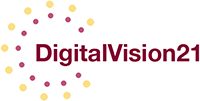McKinsey predicts the metaverse will generate $5 trillion in value by 2030, with over $120 billion being invested in metaverse-related businesses in 2022. The metaverse is a virtual universe comprising interconnected virtual worlds and is an immersive and interactive experience that is not limited to VR or AR. Both consumers and financial institutions are increasingly interested in the metaverse for its potential in entertainment, social interaction, and unique customer engagement opportunities. Banks are beginning to explore opportunities for improving customer experiences and streamlining operations through virtual branches and events. Although challenges like privacy, security, and integration with existing systems exist, the metaverse offers significant potential for innovation and revenue growth. As the metaverse continues to develop, early adopters could gain a competitive advantage in the industry.
Highlights Week of 4.17.23
The oldest members of Generation Alpha are entering their teenage years. Born between 2010 and 2025, this group is expected to become the most populous generation to date. Research from GoHenry reveals that Gen Alpha and Gen Z are money conscious and want to be involved in their finances. Parents of Gen Alpha children want their kids to learn about finance early on and desire convenient, digital ways to give them money. Fintechs and neobanks like GoHenry, Greenlight, and RoosterMoney are already targeting this market with purpose-built bank accounts and mobile services. Community financial institutions can reach Gen Alpha by understanding their digital, mobile-first preferences, engaging with them on social media platforms, and offering tech-enabled solutions with gamification and incentivization features.
Apple Savings launched on April 17. Apple’s high-yield savings account offers an initial annual percentage yield of 4.15%, with the FDIC-insured deposits being held by Apple’s banking partner Goldman Sachs. Apple aims to build a financial ecosystem for its users, with the Apple Savings account being seen as a practical add-on offering. The strategy leverages the data of Apple Card account holders making it simpler to expand their financial ecosystem relationship.
Online deposit marketplace SaveBetter has helped over 20 banks and credit unions raise more than $1 billion in deposits since its 2021 launch. The US platform of German fintech Raisin allows consumers to access competitive rates and manage their deposits across multiple institutions. Banks and credit unions can grow deposits quickly, with the platform handling all aspects from compliance to customer service. Raisin’s value proposition benefits both financial institutions and consumers, offering banks a simple way to get funding and consumers access to institutions with strong rates. SaveBetter’s dashboard enables depositors to easily shop rates and track their deposits across multiple institutions.
A recent study showed that inefficient chatbots often frustrate customers before they have an opportunity to interact with agents. The global chatbot market, however, is predicted to continue to grow and be worth $3.5 billion by 2027. To improve customer satisfaction, banks need to better utilize AI and chatbot data, which can help lower risks and provide tailored services. By integrating multiple conversational data sources, banks can create AI-generated customer profiles which can guide customers and deliver a holistic view of their needs while maintaining privacy. But to be effective banks must simplify workflows and close the gap between in-house data and customer communication.
Liberty Bank launched a new digital bank called Owners Bank to serve the needs of small business owners. It will offer business interest checking and savings accounts, along with digital tools to help small businesses manage their finances, set up savings goals, and send and accept digital payments. “Big banks often fall short when it comes to servicing small businesses. So, in an age when small businesses represent a large and impactful portion of our business landscape, workforce, and economy, we thought it was about time there was a bank that caters specifically to their needs.”
